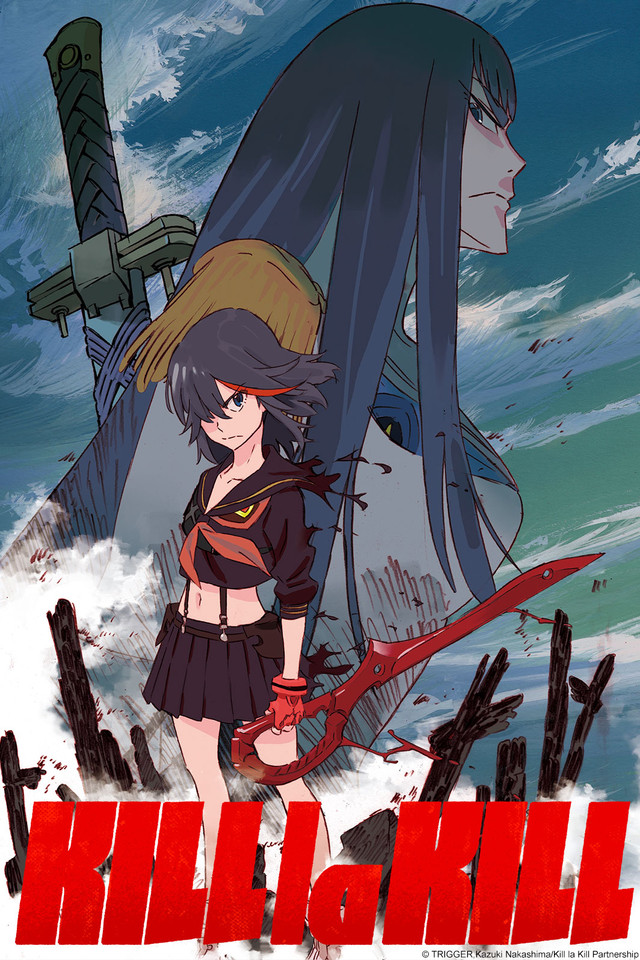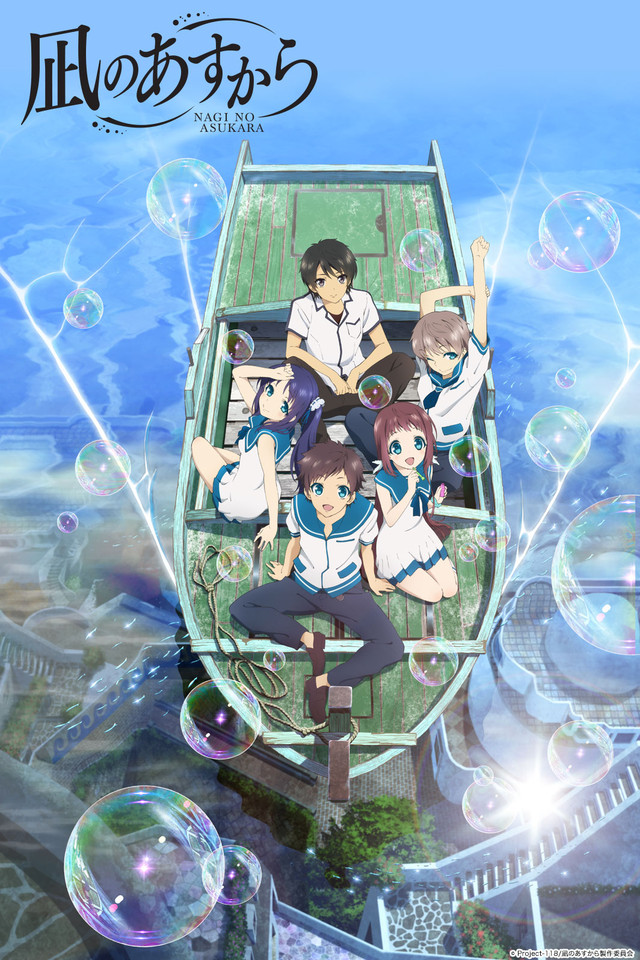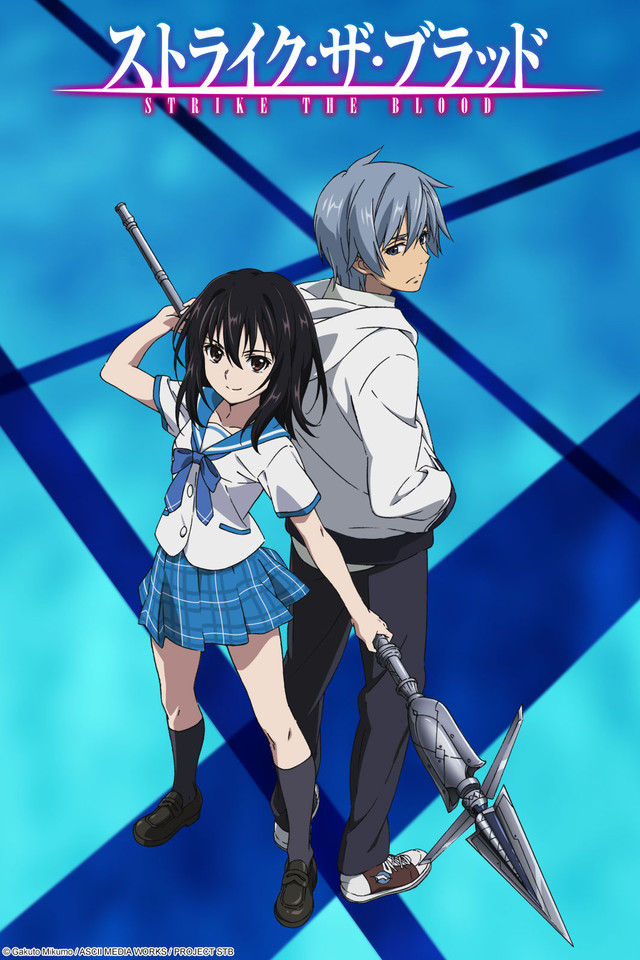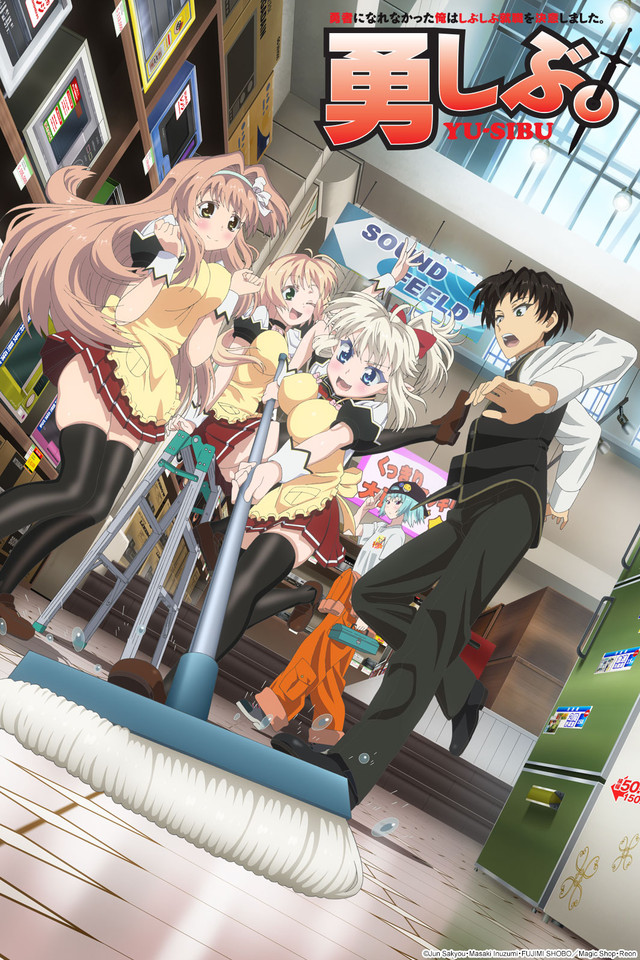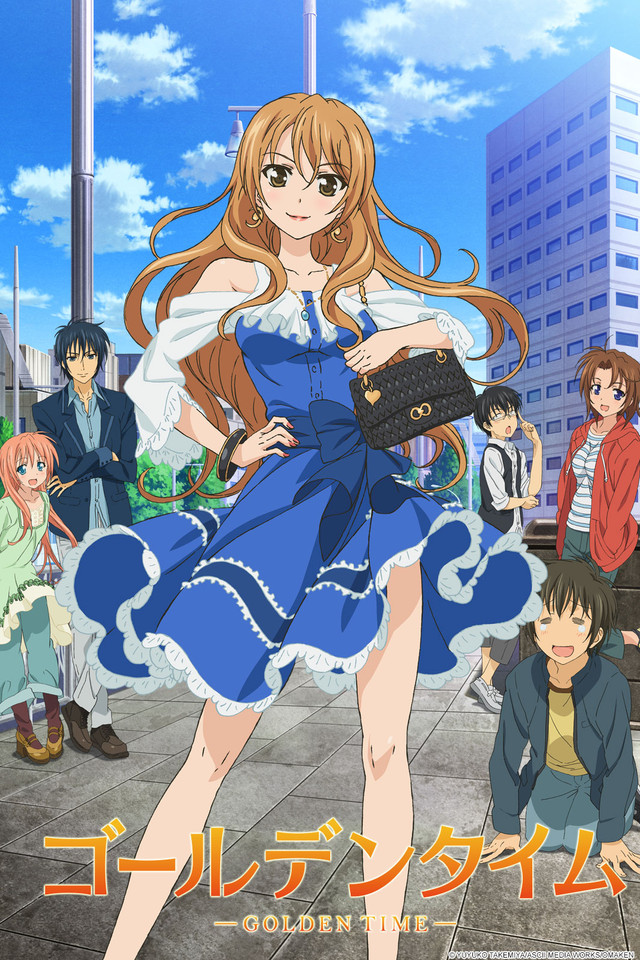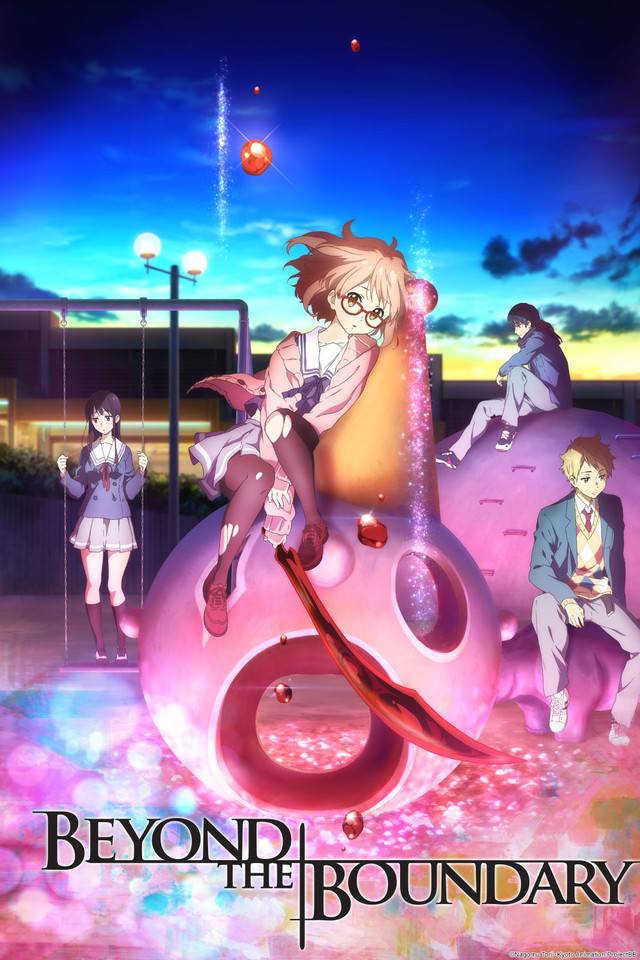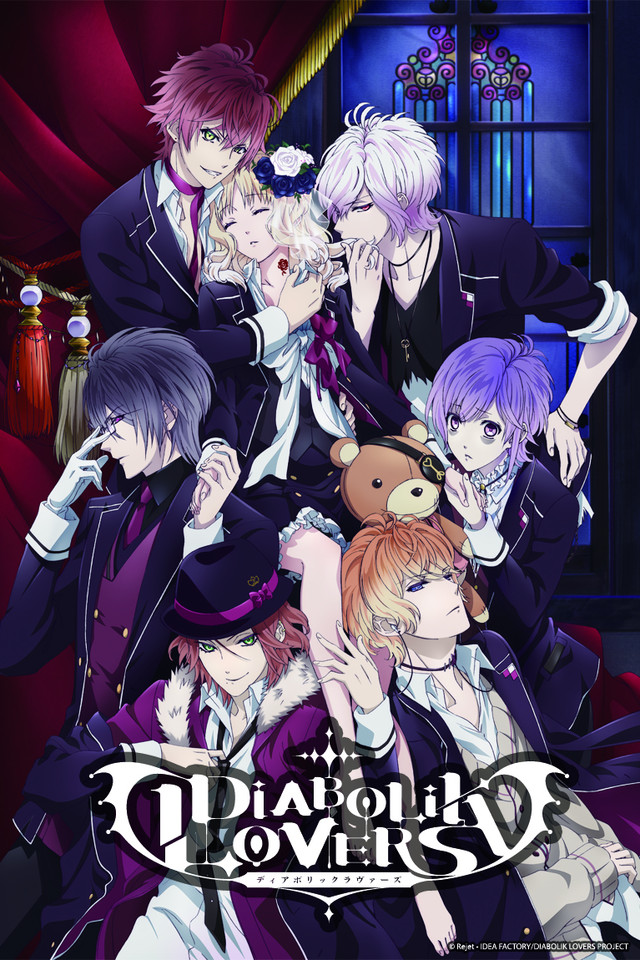Attack
on Titan
What
if humanity was in a war for the last few hundred years? What if they protected
themselves over those few hundred years by caging themselves in a wall, 50
meters tall? What if the tiny sliver of hope that humanity has, the Survey
Corps, admitted that they never get anything done, that they never CAN get
anything done?
If
any of those concepts interested you, then Attack on Titan is probably going to
interest you. Never before have I seen such desperation in just living out your
lives in anything, but Attack on Titan did it. Attack on Titan grabbed my
interest and my emotion and pulled them like a marionette does a puppet. From
beginning to end, I was hooked.
Of
course, the most notable thing from Attack on Titan is the despair, the
hopelessness, the exploration of these psychological issues as a society and on
an individual level. It’s absolutely captivating to see a grown man try to lie
through his teeth, only to fall to his knees and confess that he is indeed
helpless. It’s captivating to see a mother tell her child to run and, when she
seems him go away, to save his own life at the cost of her own, to see the
mother cry out, “Don’t go” in her final act of selfishness to just live on with
her child.
Attack
on Titan has it all, guys. It is the end all, be all of this season. For all we
know, of the year.
HENNEKO
- The “Hentai” Prince and the Stony Cat-
Before
you get started on me about stupid titles, “hentai” just means “pervert” in
Japanese. So it’s not like they’re flaunting their boobs everywhere on late
night cable television.
HENNEKO
follows the story of Hentai Prince Yoto Yokodera who is, frankly, a pervert.
But he puts up a facade to convince people he’s not a pervert, so he prays to
the Stony Cat to rid himself of his facade. In a chance meeting, he meets
Tsukiko Tsutsukakushi at the Stony Cat, who doesn’t want her expressions to be
read so easily. When they both lose that thing, in a way similar to the
monkey’s hand, they make a promise to each other to get those things back. And
so they meet Azusa Azuki.
Despite
the stupid title, this show is actually pretty funny. Imagine if you were
unable to hold yourself back from just saying, outloud, your perverted
thoughts. Or if you were completely expressionless (well, that’s been overdone since
1995 and Rei Ayanami, so not so much that one). Or if you were unable to get
out of your facade. The shenanigans simply put in place by the Stony Cat make
this show better than last season’s Oreshura, which had a similar feeling
setup.
And,
despite the name, there is actually less fanservice in this than in Date a Live
and Photo Kano. It is very much appreciated to NOT start a show with the
imoutou character dropkicking her brother out of bed while flashing her panties
everywhere.
This
season seems rife with comedy (as in there are two shows I find funny as
opposed to the usual zero), so we’ll see where this one goes.
Date
a Live
Mysterious
spacial quakes have killed about 150 million people thus far, but no one seems
to care because they go into Evangelion-like Tokyo-3 protection when a spacial
quake is coming. Fret not! There’s a secret organization that deals with the
things causing the quakes.
Date
a Live, however, is fraught with fanservice and only has hints of maybe being
great. You see, the concept is there and, as always, Ayana Taketatsu is great
at what she does: acting. But her acting and the concept cannot make up for
what Date a Live is trying to do, which is sell copies and figures.
I
talked about this with Photo Kano, but I really have no problem with
fanservice. I’m just not going to watch the shows with a crap ton of it. I
don’t see merit in them as I consume entertainment. But, well, might as well
check out all the first episodes? I guess?
Valvrave
the Liberator
In
True Calendar year 71, a kid named Haruto hijacks a giant robot to fight
against the enemy who pilot slightly smaller robots. You see, Haruto’s love
interest was just killed right before his eyes and now those same eyes are full
of vengeance.
This
is something that anime is sometimes poor at in these middle-of-the-road and/or
mediocre shows, and that’s dramatic setup and making us care about the
characters before they kill them. I’ve heard Nadesico did it great and Angel
definitely did. But in Valvrave, it just falls flat. I don’t care that generic
love interest died. But they make it seem like I should.
On
top of that, they have these mysterious other kids that just go around killing
people in cold blood. And I have no idea what they’re after. What is this all
for but to hook the viewer? There has to be something here aside from just
mystery. Mystery without purpose is superfluous and doesn’t hook as much as it
annoys.
I
think the big kicker here was that Haruto just jacked the robot. I can buy this
in something like Evangelion and Gundam where the robot was tailor made for
Shinji and Amuro is the son of a military scientist and tinkers with robots in
his spare time, respectively. But this is just your Joe Schmoe who picked up
the robot, got stabbed in the neck, and then suddenly knew how to pilot it.
Even I will call shenanigans here.
This
is entertainment, guys. And, while it entertained me, that’s all it did. It was
just mindless entertainment that, if I turned off my brain, would be really pretty
to look at. Because there were some really good visuales. But there needs to be
more. Even Date a Live had more to grasp onto that wasn’t just mystery.
My
Teen Romantic Comedy SNAFU
Cynist
Hikigaya hands in his essay about high school life to his teacher full of
sarcasm and dry humor and, naturally, his teacher doesn’t appreciate this. She
orders him to join the Service Club, but not that kind of service. It’s a club
that helps people overcome their shortcomings. Service Club President
Yukinoshita immediately starts her antagonistic relationship with him and so
the story begins.
As
you might imagine, I was hesitant to start this show because the title (like
that of a lot of anime) is questionable. But I am so glad I started this. This
show is hilarious in its cynicism and dry humor. It is not your ordinary
rom-com just because of that. Hikigaya, feeling shades of Kyon from Haruhi, has
extensive internal monologues that commentate on everything that’s going on
around him and it only works because the comedy is so good.
The
show just isn’t about comedy, though. That’s just the -com part, there’s also
the rom- part. And the romance is a little sweet in My Teen Romantic Comedy.
When Yuigahama shows up and professes that she needs help, but immediately goes
into calling everyone by nicknames they hate, it was both ugh-worthy and
hilarious. You see so many characters like this, but she just seemed to work in
the context (probably because Hikigaya’s monologues).
My
Teen Romantic Comedy should be hailed for its cynicism about high school life,
which anime often romanticizes, and for its in-your-face truth-telling about
the entire situation surrounding the characters. It’s funny, the characters
work (though not fully developed yet), what more can you ask for out of a
rom-com?
Photo
Kano
What
if protagonist’s Maeda’s life were turned upside down by the camera he received
from his dad? Well, that’s the premise of Photo Kano and it could not be more
true. I know because it’s based off of a Japanese dating sim. As per usual,
these dating sims have their otaku checklist of characters: cute little sister,
childhood friend, ditzy teacher, busty character, and I’m sure there are tons
more characters yet to be introduced who are all just the same archetypes.
But
sometimes these shows surprise, like Clannad and Amagami, which were a touch
above the rest. Rarely do they do this, but sometimes! Photo Kano is not
stepping above the rest and I do not foresee it doing so. We’re going to go
through the laundry list of girls and then he’s going to end up with one at the
end following a predictable and dramatic climax.
The
problem with shows like Photo Kano is that they’re clearly just trying to sell
BDs and figures and nothing more. It’s a fine marketing strategy, and it works.
I’m not faulting anyone for producing them because it keeps food on the table
for a lot of people (and off the table for others, but that’s their choice).
This’ll probably be the last show I watch that I know is based off of a dating
sim game and I really have no idea why I picked it up now. Same old, same old
for this show.
Red
Data Girl
Izumiko
Suzuhara is a girl with a mysterious power to control electronic devices? But
she can also make them just completely stop working. It’s a very strange
phenomenon that she’s hesitant about, and tries to not use any electronic
devices as a result. Sort of childhood friend Miyuki Sagara is not impressed by
her powers or her destiny.
The
first half of RDG, with exploration of Suzuhara’s powers, is much more
interesting than the last half. The last half kind of devolves into old friend
hates your destiny story, and it’s not executed well enough to be at all
interesting. The formerly timid and changing Suzuhara turns straight back into
the timid little girl she was before she drastically cut her hair. It really
felt like we were going to see some good character change from Suzuhara as she
un-alienates herself from her father (or, perhaps more accurately, her father
from Suzuhara but it’s not yet gone into depth on that).
I
think what ultimately turned me off from the show was Sagara as a whole. Right now,
he’s just generic child prodigy that’s there to hate Suzuhara and ultimately
push her to her goal at the climax of the show. The first half was promising
enough that I want to keep watching, but I’m more skeptical than I’d like to
be.
Flowers
of Evil
Social
pariah Kasuga loves reading, but isn’t that great at school. But he has a crush
on the smartest girl in school, Saeki.
That’s
about the gist of the show thus far, but it is so good. If all three of you
reading this pick up any show this season, let it be this one. Especially for
you fans of animation. There’s something about Flowers of Evil’s pacing and
deliberation that really draws you into the story and makes you forget that
you’ve been sitting for 23 minutes watching a show.
There’s
a lot of deliberation and care that goes into the animation for Flowers of
Evil. When there’s a close up, and someone’s saying something, you can see
their mouth move as if a real live person is saying it. And the character
designs and the animation style itself is extremely interesting and steeped in
realism. The first episode feels like you’re watching a live action show, but
it’s clearly animated. I’m not a scholar of animation, but I can tell care went
into this.
I
think it’s the subtle moments of characterization that ultimately draw me
further and further into the show. Like when Kasuga hastily looks away when
Saeki catches him glancing over at her. It’s an overdone trope in anime, for
sure, but it works here. Or when the teacher is handing back the tests and he
just tells Kasuga to “do better next time, eh” as we get a close up of his less
than mediocre score. It so telling of both the Japanese culture’s emphasis on
test scores as well as the dickishness of this teacher just in one three second
moment. There’s not often a lot of subtlety in anime, but when it’s done, it’s
done well. Really well.
Sparrow’s
Hotel
Sparrow’s
Hotel is about the Sparrow’s Hotel where busty woman Saiyuri works. Alongside
her are forgettable manager and forgettable other woman worker. In fact, I only
remember Saiyuri’s name because it was literally the last line of the show.
This
is one of those three minute shorts that, unless they’re as good as last
season’s Encouragement of Climb, you have to like their comedy the first
episode or it’s just not going to resonate with you. This particular one is
about Saiyuri’s antics at being in love with cute things (probably) and being
super strong (definitely).
YUYUSHIKI
Yuyushiki
follows the shenanigans of Yui, Yukari, and Yuzu as they are just entering high
school. Yui plays the straight man while Yuzu is the clown and Yukari is the
yuri lover, but only in secret.
This
feels a lot like something like Lucky Star or Yuruyuri, where they just have a
whole bunch of gags stuff into an episode and pass it off as the passing of
time. Granted, their settings are in a logical chronological order, but it
feels like it’s chronological only because it couldn’t be a three-minute short.
The
problem with Yuyushiki is that its jokes aren’t as funny as Lucky Star because
it doesn’t have the extra element of poking fun at otaku Konata and Konata is
in general a stronger character than any of the Yu-’s. And Yuruyuri had more of
a complete narrative than Yuyushiki does thus far. It seems like it’ll revolve
around this club with zero members that they’re joining, but it just isn’t
there yet. Given how much it meandered prior to them joining, it doesn’t seem
like it’ll really get anywhere. Which is fine, but when there are other shows
out there that I think are doing exactly what Yuyushiki is trying to do, why
not just rewatch those?
AIURA
Aiura’s
another one of those three-minute shorts (but this one runs four minutes!)
that’s about three students about to enter high school. That’s about all you
get from the first episode aside from some generic character archetypes.
But
given the subdued nature of the first episode, Aiura shows promise, especially
compared to either Sparrow’s Hotel or Yuyushiki. Encouragement of Climb had
some pretty amazing characterization in the time they were given, and it worked
great. I have a feeling Aiura can do the same thing. I’m optimistic.
Mushibugyo
The
Insect Magistrate (Mushibugyo in Japanese) are a group of insect exterminators
that kill these giant monster demon insects. Jinbei is an overzealous late
teens/20-something kid who is the son of a great swordsman. Jinbei travels to
Edo to join the Insect Magistrate in the stead of his father, and so begins our
story.
When
you get right down to it, this show is your pretty typical shonen show chock
full of flashbacks, inner monologues, and exciting and well animated fight
scenes. And even, as Masaomi Kida may put it, boobylicious females (well,
female; but, really, that’s enough). I commend Mushibugyo for its steadfast
determination to conform to expectations.
Unfortunately,
there’s really nothing else behind this show so far. It was a good introduction
for the main character, Jinbei. But until we get into the other four members of
the Insect Magistrate, I can’t really call this anything but exciting.
Karneval
Surrounded
in mystery and intrigue, Karneval is about a law enforcement agency that’s
equipped with some cool magic powers and it surely about to fight some more
supernatural stuff. Meanwhile, main characters Gareki and Nai are two even more
surrounded in mystery and intrigue.
Karneval
isn’t really doing much more than Mushibugyo, but it’s working a lot better for
me for some reason. The world is more interesting (it’s in what looks to be
1920s-ish England as opposed to maybe Edo-era Japan), the characters are more
interesting, the everything is more interesting. Instead of just being, “Oh
fantasy characters are attacking feudal-era Japan again”, it’s a neat 1920s-era
trains and magic world, which I just personally like better. The characters are
less one-dimensional tropes and archetypes and more two-dimensional bases for
what could be interesting characters.
The
art for this show is stunning as well. I mean, look at this:
http://www.funimation.com/karneval.
That’s colorful and exciting and thought provoking on a very basic level. I
thought it’d be a silly show from the name Karneval, but it intrigued me from
this very image. There’s a lot of potential to be had with Karneval, and we’ll
see where it goes.
Arata
the Legend
Let
me say this upfront: I really like Yuu Watase. I haven’t read Fushigi Yugi, but
I certainly want to. But I have read Imadoki! and Appare Jipangu! and I really
liked them both. I’ve also heard good things about Alice 19th and Absolute
Boyfriend. Not to mention I like her art style. And with that, I’m looking
forward to Arata before I even start the episode! Though the art Crunchyroll
has on their page doesn’t look very indicative of Watase’s art...We’ll see.
Present
day, high schooler and “guy with sense of justice” Arata won’t join the track
team. Back in fantasy land, Princess-to-be Arata (who is still male) has to
become the next princess or sacrifice his entire clan.
From
my memories of Imadoki! and Appare Jipangu!, I’m a bit disappointed in Arata
thus far. Those were pretty good slice of life stories and, with the
introduction of these big fantasy ideas, I’m not sure I’m yet sold on Arata. It
seems like Watase is just throwing as much in there as she can to make it
interesting. But usually with these shojo high fantasy shows, it only gets
tighter as we move along and Arata is one of Watase’s more recent series, so
she’s been around the block once or twice.
However,
my fears about the art turned out to be pretty true. I can see some Watase in
the way the characters move and how their bodies are, but the faces are a far
cry from the trademark look in Imadoki! and Appare Jipangu! I skimmed through
some of the manga online and they made the look sleeker and more mainstream and
I’m not sure if I like it this way.
Despite
all my minor qualms, the show certainly did entertain and, if Watase’s previous
work is any indication, it will only get better.
Muromi-san
One
day, a fishing high schooler catches a big one...It’s just not the big one he
expected. It’s a mermaid that’s buffed up with fanservice and annoying.
The
show itself seems to be relatively informative, talking about the ryuugujou
(the Dragon’s Palace Castle under the sea in Japanese lore), cretaceous period,
jurassic period, and even name dropping Poseidon. But it barely scratches the
surface of any of these topics and it more a passing thought than a history
lesson. Though, in a television show, you don’t want much more than that.
Other
than that, it seems like a gag comedy where Muromi shows up and bugs the main
character while he tries (and fails) to fish. It’s certainly an entertaining 20
minutes of TV, but if the comedy doesn’t resonate with you, it’s going to get
old fast.
Zettai
Boei Leviatan
There
is a main character named Leviatan and also two other characters. That is
literally what the first lines of the show tell you. The show is actually about
a group of three heroes that are heroic and presumably will do heroic things in
the future. And Leviatan has a brother that’s missing. But that’s about all you
get thus far.
It
certainly is a nice looking show, though. The animation being nice to look at
and the character designs are easy on the eyes. The acting of Kana Hanazawa as
little fairy Syrop and Ayana Taketatsu as Jormungandr are great as always. But I really feel like there isn't much more to say about the show, because there was nothing else given. It was just a very typical good guys v. bad guys story. I'll see how the second episode plays out, if only because what else is there now?
Gargantia
on the Verdurous Planet
Mysterious
Stranger and his giant robot Chamber are locked in a battle for the sake of
their race against a mysterious alien enemy. Given that this plot was already
done this season, and I feel that Majestic Prince was a little more unique in
its execution, I was skeptical with this show from the get-go.
But
Gargantia separated itself at about the halfway point and made it, thus far,
the most interesting show this season for me. You see, the whoever aliens are
winning and Mysterious Stranger and his people are forced to retreat back
through the wormhole. Only, the Mysterious Stranger falls of their ship and
gets sent somewhere else. And this is where it gets interesting.
What
was so good about Gargantia was its willingness to explore. There’s a lot of
cool science fiction things going on here, like the JARVIS-esque robot system,
the futuristic setting, and the militant society. But what’s unique is its
steeped in realism, by the time we get through the wormhole.
SPOILERS
START HERE, because I want to talk about this particular part in detail.
He
lands on Earth, but he doesn’t know that. He just lands on a mysterious planet
that is exactly 1G and has breathable air. The Earthlings are reminiscent of
Native Americans in their clothes and I’m sure it could grow into a cool
commentary of where we are now as people. But the most interesting part was
when he was running around and he asks Chamber where he is. Chamber responds
that there is one possibility, but it’s only been reported and never proven to
exist. That’s our planet: Earth. That’s pretty cool. I’m looking forward to
explorations of his society, commentary on our society, and the mixture of the
two. We’ll see how it works out.
The
Severing Crime Edge
Kiri
Kaimura finds himself wandering to the house of a ghost with beautiful hair.
The ghost turns out to be loli girl Iwai Mushanokoji, just a normal girl with
really long hair. That is cursed. You see, her hair can’t be cut. But Kiri has
a special pair of scissors.
The
setup of Severing Crime Edge would have made me roll my eyes had I read it
prior to watching the show. However, getting past that, it has some interesting
mythology it could explore. Kiri’s special pair of scissors is the pair that
was used by a serial killer that, well, killed people with them. They’re part
of a group of weapons that all were used by serial killers or mass murderers or
whatever.
That’s
what’s so interesting. If they explore this mythology of the weapons and keep
it exciting with the two other cursed weapons we know of, it could turn out to
be really fun. It was really fun so far. It has an interesting story and
mythology to go on, and it can hopefully only build on that from here.
Oreimo
season 2
SPOILERS
FOR SEASON 1 IN THE FOLLOWING TEXT
Middle
schooler Kirino was a closet otaku and lover of “imouto” games and anime before
she revealed her big secret to big brother Kyousuke. From there, she was able
to branch out, meet other otaku, and reveal her secret to her “normal” friends.
Oreimo’s
second season picks up right where the first one left off, with Kirino back
home from her study abroad in America. But something’s amiss; Kirino is
treating Kyosuke like he’s just a fly on the wall, like it was before the
series ever began and it has Kyosuke a little worried that his relationship
with his sister is breaking apart. To complicate this, Kuroneko kissed him on
the cheek just a few days ago and it’s got him all confused about love and life
and stuff.
Thus
far, the series is still a really fun slice of life of otaku culture and, while
not as good as Genshiken as a whole, does a lot of important commentary against
the otaku culture, something that wasn’t present in Genshiken. Fans of the
first season are glad to have it back in animated form, because we’re never
getting those light novels.
The
Devil is a Part-Timer!
The
demon king and his trusted companion find themselves in the human world. One
hero who stood against the great demon king drove them out of their own
dimension following an all-out war between humans and demons.
The
first thing I have to mention is anime’s sometimes amazing, somethings awful
references to other media. In this show, it’s Holy Potter: Blood Sorcerer and a
Dragon. And I love/hate it. And also MgRonald.
Anyway,
as the title suggests, they have to get a part-time job to make their way and
make their way back to their own dimension. Let me just say this: YAWN. I won’t
spoil the obvious ending for you folks, but it’s obvious. The merits of this
show simply lay in its promise. It COULD be a cool fantasy story. It COULD be a
cool good v. evil story. It COULD be a lot of things. But with a title like
“The Devil is a Part-Timer!” it isn’t going to do any of those things. I’ll
keep with it for one more episode, because maybe it will do some of those
things and maybe it’ll be interesting. But it’s just wasted promise right now.
DEVIL
SURVIVOR 2 THE ANIMATION
Apparently
it’s in all caps, is the second of something, and is the animation. Further
research shows that this is based off a DS game of the same name, which I can
only surmise is the second in the series of games. But what this show is
actually about is a big natural disaster that throws the world into disarray.
Surrounding this disaster is mysterious organization JP and mysterious app
Nicaea. The app will show your face just before you die and when the two boy
main characters put their faces and names into it, it shows them exactly where
they are. Dead.
What
follows is the rest of the show where love triangles are blossoming, main
characters are wielding unbelievable power, and sidekicks feel left behind. As
far as characterization goes, this show could do it better. It leaves a lot to
your knowledge of characters in general and, hopefully, will expand on those
characters later.
That
said, the plot of this is pretty damn interesting. I mean, your life is saved
by a game and then you get to wield monsters? Ok, it’s been done before, but it
sure is exciting. Through one episode, I feel like this is doing what Btoom
failed to in terms of making their characters at the very least believable.
It’s short of Sword Art Online, but it could prove to be that show I want to
look past its flaws to just enjoy some entertainment. And, really, isn’t that
what we watch TV for?
Majestic
Prince
In a
world where humanity is at war with an unknown alien species, a group of five
bumbling idiots are suddenly thrust into a position where they pilot vastly
superior mechs and push back the enemy against all odds. Stop me if you’ve
heard that before, because I wish someone had stopped me from watching it. The
best I can say about this show is that I didn’t really lose my time. I sure
wish I had it back to watch something better, but it was...entertaining? If
off-putting.
The
direction in this show is really weird, and the mediocre animation does it no
favors. The most jarring example was when they’re jumping between character
reactions. Usually, the director will cut directly to the next character or
will do that multiple characters in split screen thing, like in Naruto or
Bleach. But not here. In here, they move the camera REALLY FAST to move to the
next character. It’s an interesting concept, but it’s jarring. It doesn’t work.
The
character designs were a little too comedic for the serious tone I thought the
series was going for. I mean, it really seems like they’re trying to make
Macross, but with a sentai team. It doesn’t really succeed and you’re just left
with an amalgamation of a whole bunch of concepts hastily put together.


